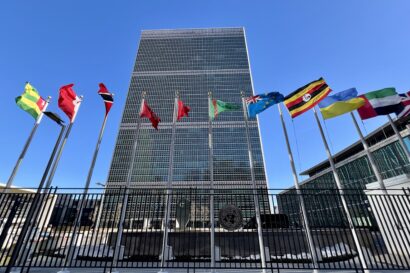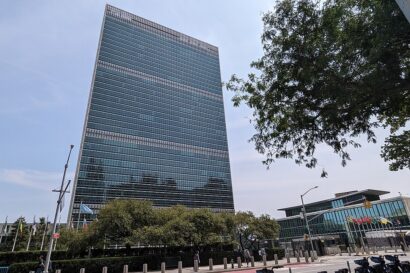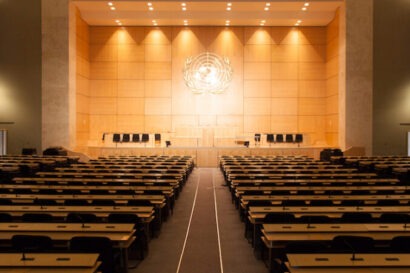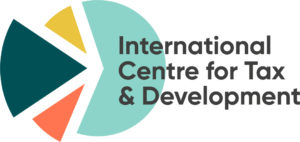U.S. President Donald Trump’s decisions have triggered significant shifts in international politics with ripple effects extending even to niche areas like corporate taxation. The U.S. has effectively withdrawn from global tax cooperation, jeopardising a decade of painstaking negotiations and casting uncertainty over the future of tax multilateralism. This marks the end of an era, raising pressing questions about the viability of global tax frameworks. However, it also presents an opportunity for countries of the so-called Global South to explore alternative approaches that may redefine international tax governance in the years to come.
The end of the Two-Pillar Era
Over the past 10 years, multilateral tax negotiations have been driven by an institutional novelty: the Inclusive Framework (IF) on BEPS. Managed by the OECD Secretariat, the Inclusive Framework brought together, for the first time, 82 countries (this number has now surpassed 145 countries and jurisdictions) on equal footing to discuss cross-border tax issues. The IF embarked on a radical quest to reform some long-standing deficiencies of the system by proposing a “Two-Pillar Solution”. However, the change in U.S. government has fragilized this package considerably, accelerating the divestment of Global South countries largely disappointed by the process.
The global stalemate on Pillar 1
Under Pillar One, countries agreed to negotiate two distinct approaches to address the tax challenges of a digitalised economy.
Amount A was designed to redistribute taxing rights (i.e. profits) to market jurisdictions (i.e. countries where consumers or users are located), a concept strongly advocated by European nations and countries of the Global South. However, for many Global South countries, the deal became increasingly less attractive due to its growing complexity and the dilution of its redistributive impact through some technical provisions. This includes the “Marketing and Distribution Profits Safe Harbour” (MDSH). Among other provisions within the MDSH, this reduces Amount A profits allocated to market countries in cases where withholding taxes are already applied, a widely used practice in lower-income countries. In addition, the U.S. – by hosting most of the MNEs in scope of Pillar One – has effectively a veto-power over the coming into effect of the multilateral convention designed to implement Pillar One, which, as things stand, seems impossible to ever pass U.S. congress.
Amount A is therefore almost certain to fail, undermined by political deadlock and waning global support.
On the other hand, Amount B, designed to simplify cross-border transactions of “Baseline Marketing and Distribution Activities”, is similarly at odds. Largely welcomed by low-capacity countries in Africa, the U.S. has made it a priority for Amount B to be mandatory. India has however opposed it, explicitly stating its objection and thus far blocking agreement.
The unequal success of Pillar 2
Pillar 2, designed to curb tax avoidance, was itself divided into two parts – GloBE and the STTR. The Global Minimum Tax (GloBE) intended to put a 15% floor to corporate income tax (CIT) was a success for being implemented quickly, albeit mostly in major European and Asian OECD countries. While Barbados, Liechtenstein and Vietnam are the only non-OECD and non-EU countries to have implemented GloBE rules in their domestic laws, other countries have had to reassess their tax incentives to ensure that they don’t reduce effective tax rates below the 15%.
GloBE has also been one of the first targets of the new U.S. administration. On President Trump’s first day in office, he signed an order threatening to double tax rates on companies from countries that had implemented the Under-Taxed-Profits-Rule (UTPR), a fallback mechanism designed to enforce the 15% minimum level of taxation. In this way, the U.S. has targeted key OECD allies such as the EU, South Korea and Japan. Foreseeing the conflictual nature of Pillar 2 implementation between mostly OECD countries, the former U.S. chief negotiator Itai Grinberg even called for the OECD to refocus its efforts on agreement between its original member countries, and to limit the role of the IF.
Lastly, the Subject-to-Tax-Rule (STTR), a treaty-based mechanism to increase source taxing rights for passive income streams (e.g. interest, royalties and some services), if undertaxed in the destination country, has sparked some interest outside the OECD, as 13 non-EU or OECD countries have signed or showed interest in the STTR Convention. Revenue streams covered by the STTR are however comparatively small and won’t address the major points of criticism in the current international tax architecture.
The remaining prominence of digital taxation
With Pillar One effectively failing, the question of redistributing taxing rights—especially in the digital sector—remains unresolved. A main indicator of the cross-spanning interest in the issue amongst OECD and Global South countries has been the implementation of Digital Service Taxes (DSTs). OECD countries (e.g. France, the UK, Italy, Spain, Austria, Portugal and Turkey), as well as Global South countries (e.g. India, Kenya, Tanzania, Nepal, Kyrgyzstan and Uganda) have implemented such measures. Other countries (e.g. Tunisia, Colombia and Brazil) have paused their digital tax initiatives, awaiting a solution to be found at the OECD.
First insights from OECD countries have indicated rather positive outcomes of DST implementation, as they seem to have raised revenues in a cost-efficient way. Unfortunately, specific findings on their effectiveness in Global South countries are still missing. However, an analysis by the South Centre found that revenue gains for developing countries are comparable between the OECD’s Pillar One and the imposition of DSTs. The African Tax Administration Forum (ATAF) has further argued in favour of their implementation.
The open window of the UN Framework Convention
While the IF is losing steam, the focus of multilateral tax negotiations has largely shifted to the longstanding alternative forum: the United Nations. Discussions have now kicked off to draft a United Nations Framework Convention on International Tax Cooperation and two early protocols on substantive matters. The UN process will also be a novelty in the sense that the U.S. has completely withdrawn from the discussions. In early February, the U.S. announced it would not participate in the UN process which it described as an “unwelcome overreach”, “rejecting the very nature of these discussions”. My colleague Frederik Heitmüller reflects on the current state of play of the UN process here.
This being said, the U.S. withdrawal from international tax agreements could provide a major opportunity to review the issue of digital taxation. Success will depend however on the ability to build coalitions and set substantive policy goals. Discussions at the UN level seem a good forum for that debate, considering that the first early protocol to be negotiated until 2027 is supposed to relate to the “provision of cross-border services in an increasingly digitalized and globalized economy”. The UN framework will be informed by the Pillar One Process to understand the chances of success of a multilateral UN-led negotiation.
However, any attempt to rewrite the text in favour of Global South interests risks being framed as an opportunistic grab of U.S. taxing rights, sparking significant pushback (albeit the U.S. seems to be putting maximum pressure already by imposing huge tariffs globally after “liberation day”). A treaty without the approval of the country hosting most of the today’s global MNE’s will definitely be hard to enforce effectively, notwithstanding the broader geopolitical consequences outside the tax world.
What way forward for Protocol One?
This opens the way for some sort of cooperation for unilateral action, which might be much easier to achieve and lead to less pushback from the U.S. The UN process could consider soft law instruments that provide guidance and harmonise national measures. Coordinating domestic measures could not only be a politically feasible solution to raise revenues and reassert taxing rights but might go beyond the current coalition of Global South countries that has been driving the process at the UN level. It would provide further legitimacy to Global South countries to change their domestic laws in favour of source taxation.
Treaty or non-treaty solution?
Various design options could be explored, each potentially reshaping the winning coalition in international negotiations. One of the first questions should address whether a solution will be subject to tax treaties or designed outside of their scope. Countries could for instance push for a proliferation of source taxing rights within Bilateral Tax Treaties, by renegotiating the definition of Permanent Establishments under Art. 5 and giving withholding tax rights similar to Art. 12B of the UN Tax Treaty Model. The use of withholding taxes for transnational services has long been experimented with by Latin American countries (especially Brazil) and India, and has been recently presented as a viable option to tax certain digital services, thus limiting the need to implement DSTs altogether. It remains to be seen whether this approach could spark interest in OECD countries, which would require them to make substantive changes to their existing network of tax treaties.
A revival of DSTs?
Another option would be to reignite the proliferation of DSTs. It is important to note that DST designs seem to diverge between OECD and non-OECD members. While Global North countries have implemented narrow-based DSTs with higher tax rates, their Southern counterparts have pursued broader DST frameworks with relatively low rates. Within the South, agreement may be less consensual than it appears at first sight. While ATAF has proposed an approach to drafting DSTs and has recently reiterated options for DSTs either within or outside the scope of income taxation, China might be wary to advance digital taxation based on the internationalisation of its own multinational champions.
In parallel, other Asian countries have shown only modest interest in DSTs so far. India even scrapped its broad-based 2% equalisation levy in 2024 and announced the withdrawal of the 6% levy, first introduced in 2016. In addition, while depending on their exact design, DSTs are likely to strengthen the U.S. claim of targeted measures against its companies.
Learning from Pillar 1?
To counter U.S. claims of discriminatory tax measures, countries could coordinate and align their unilateral actions with Pillar One’s broader approach of taxing the most profitable firms across all sectors not just the digital ones. Expanding this scope could however lead to conflicts between OECD and non-OECD countries. While all countries have an interest to tax (U.S.) digital companies, as observed in the growing interest in DSTs, a profitability targeted measure might not be beneficial to all. Fearing to lose out from a deal that would transfer taxing rights to the Global South while also preventing them from taxing U.S. companies, rich countries might prefer a different approach. Whatever strategy countries of the Global South can agree upon, negotiations should aim to be broadly accepted and include design elements that incentivise the participation of countries of the South and North alike.
The future of digital taxation is now fully open, and the Global South has an opportunity to reshape the debate
While the OECD’s process is essentially deadlocked, the UN has emerged as an alternative forum—though not one that can force change on unwilling players. The U.S. withdrawal might open the way for OECD countries to align their interests with the Global South. But to be effective, the UN process should aim to build a large coalition to limit economic disruptions and strengthen the legitimacy of alternative tax measures.
Countries now face a strategic choice: pursue coordinated multilateralism either through the renewal of DSTs or a push for broader changes to tax treaties, while risking U.S. retaliatory measures; or adopt a broader multilateral approach based on a common treaty that would more fundamentally create a system to allocate taxing rights in the world, at the risk of eventually failing if disagreements cannot be bridged.



